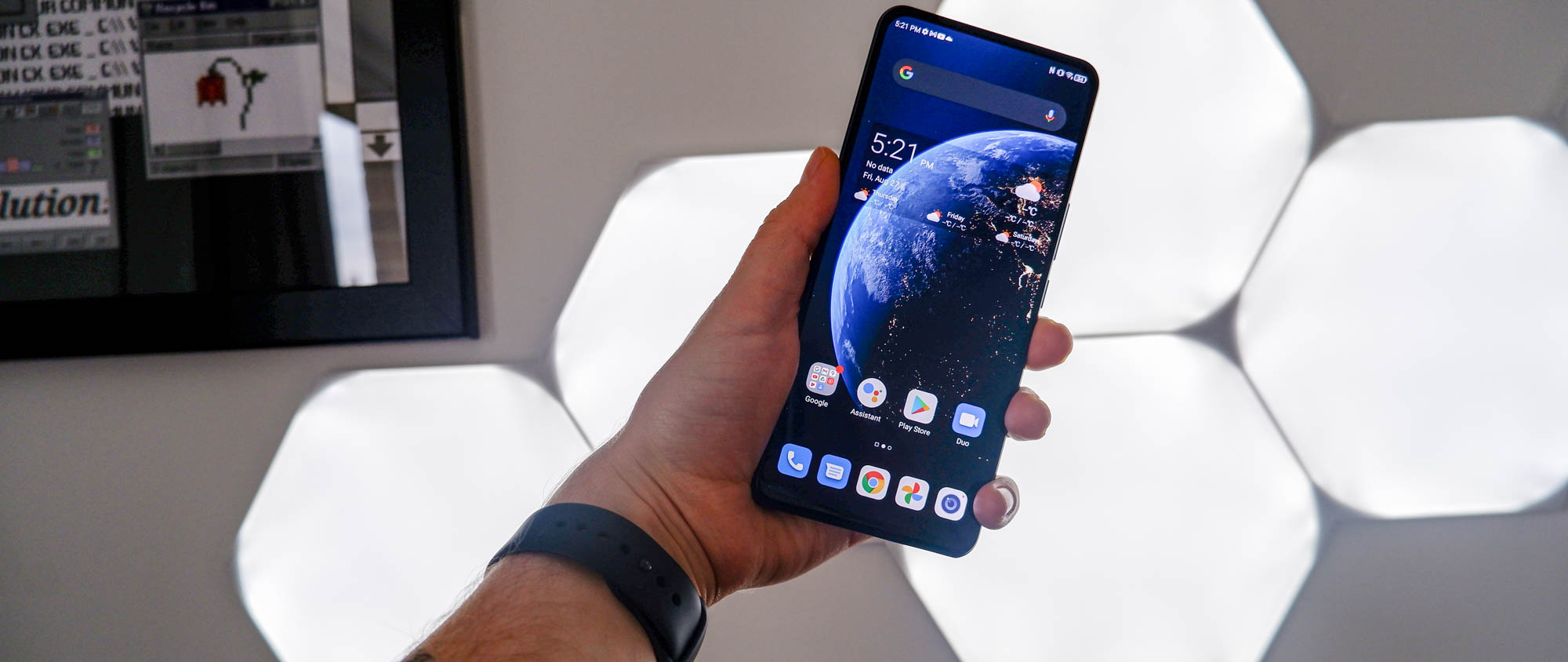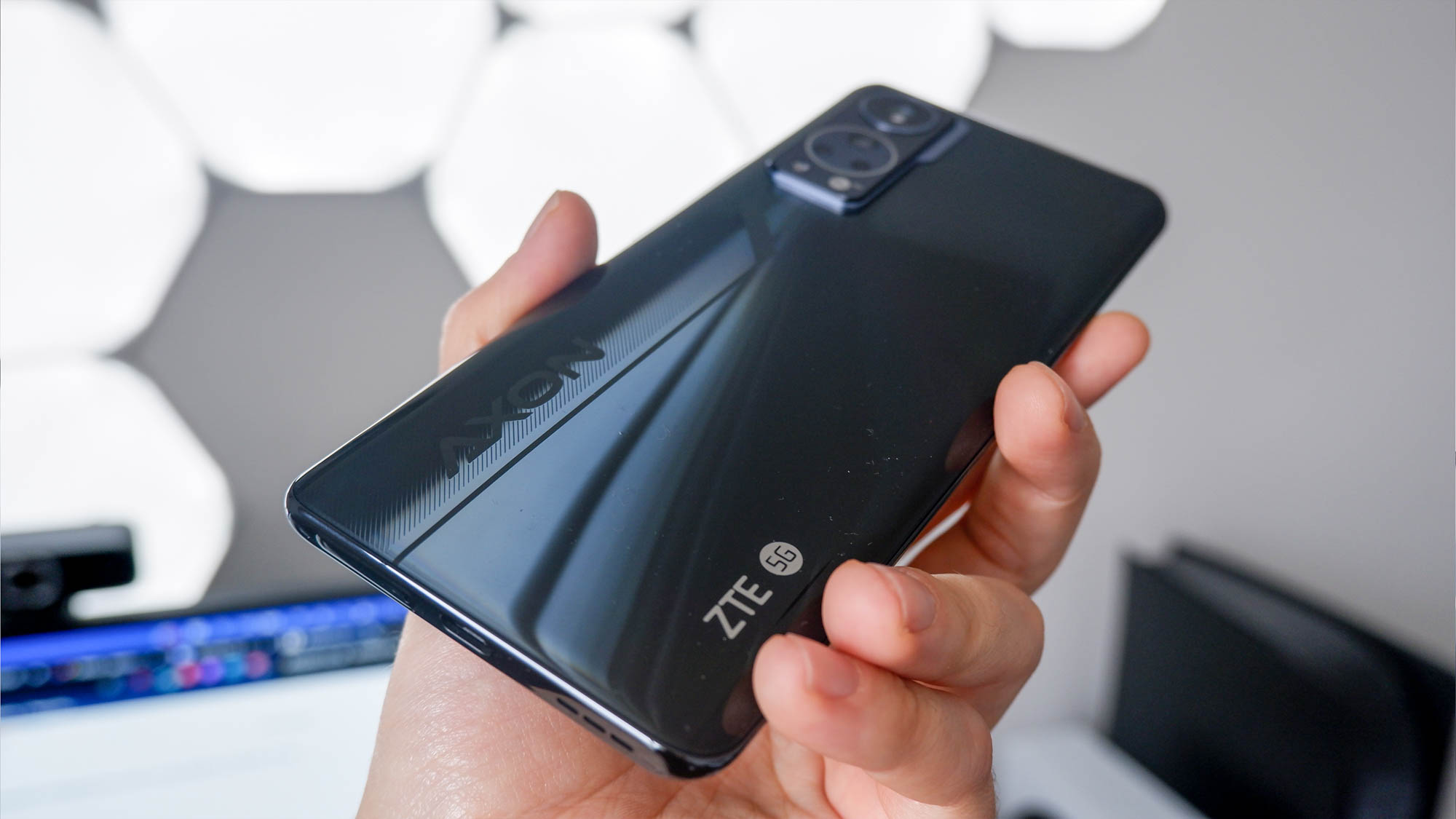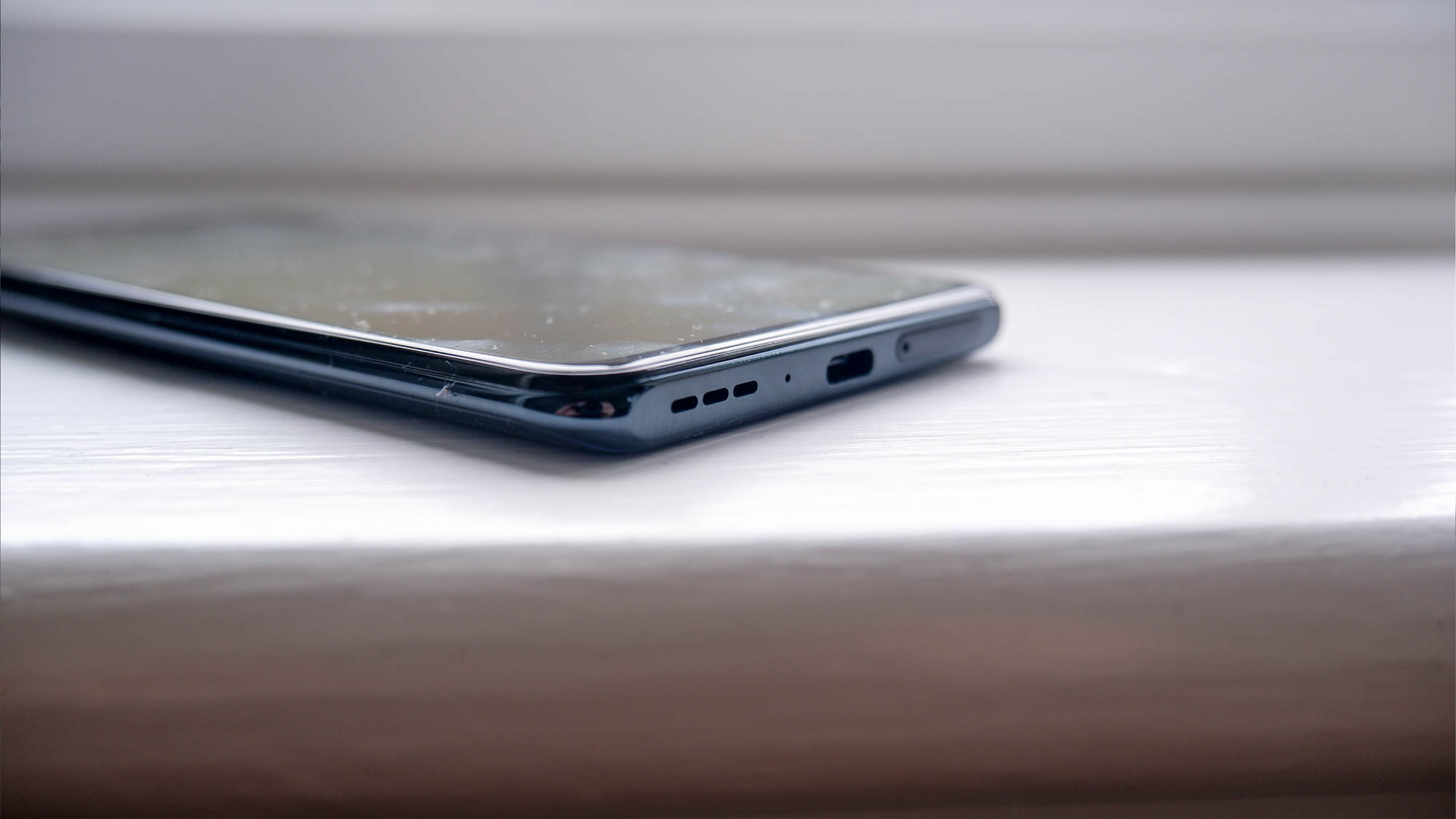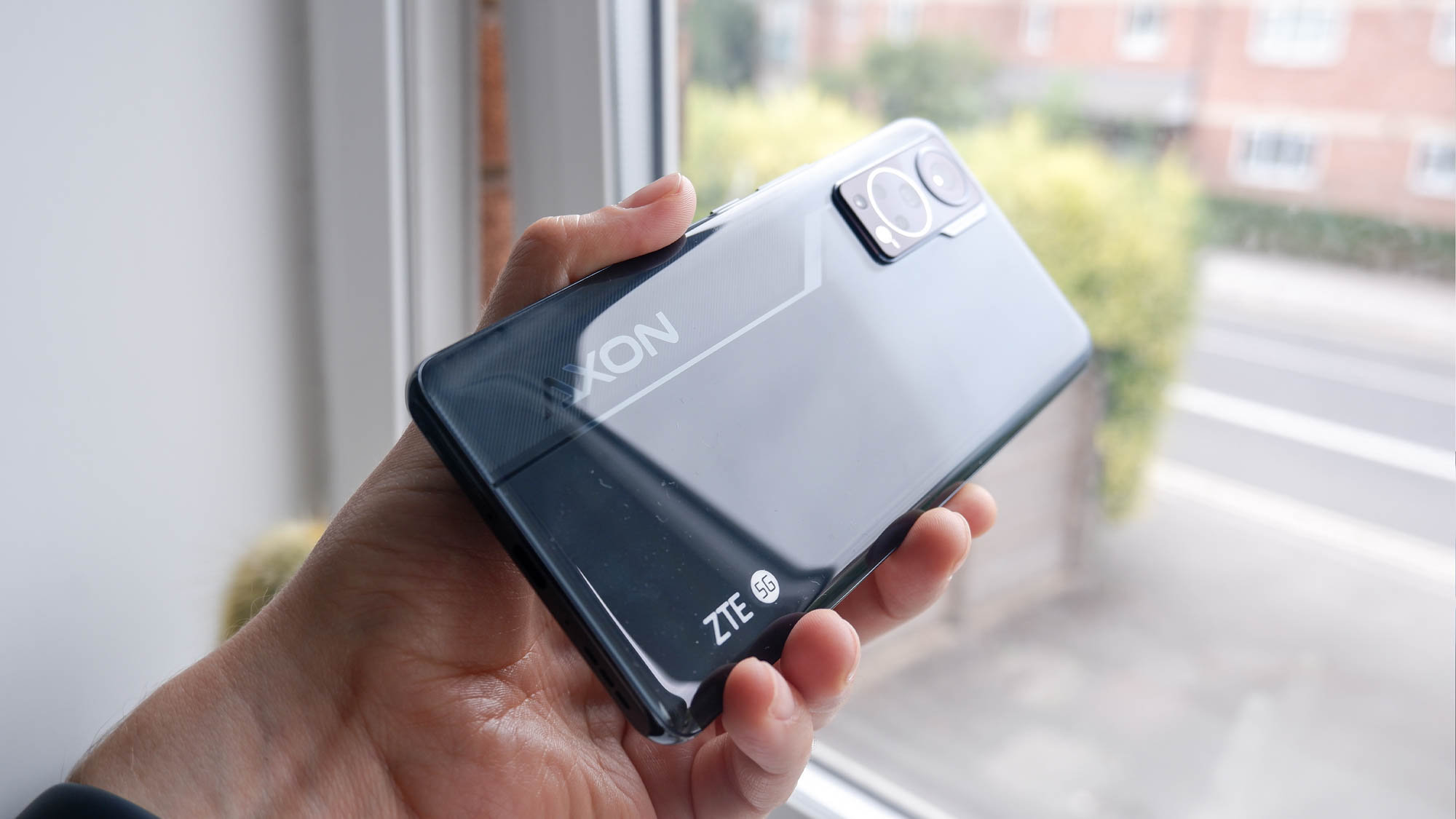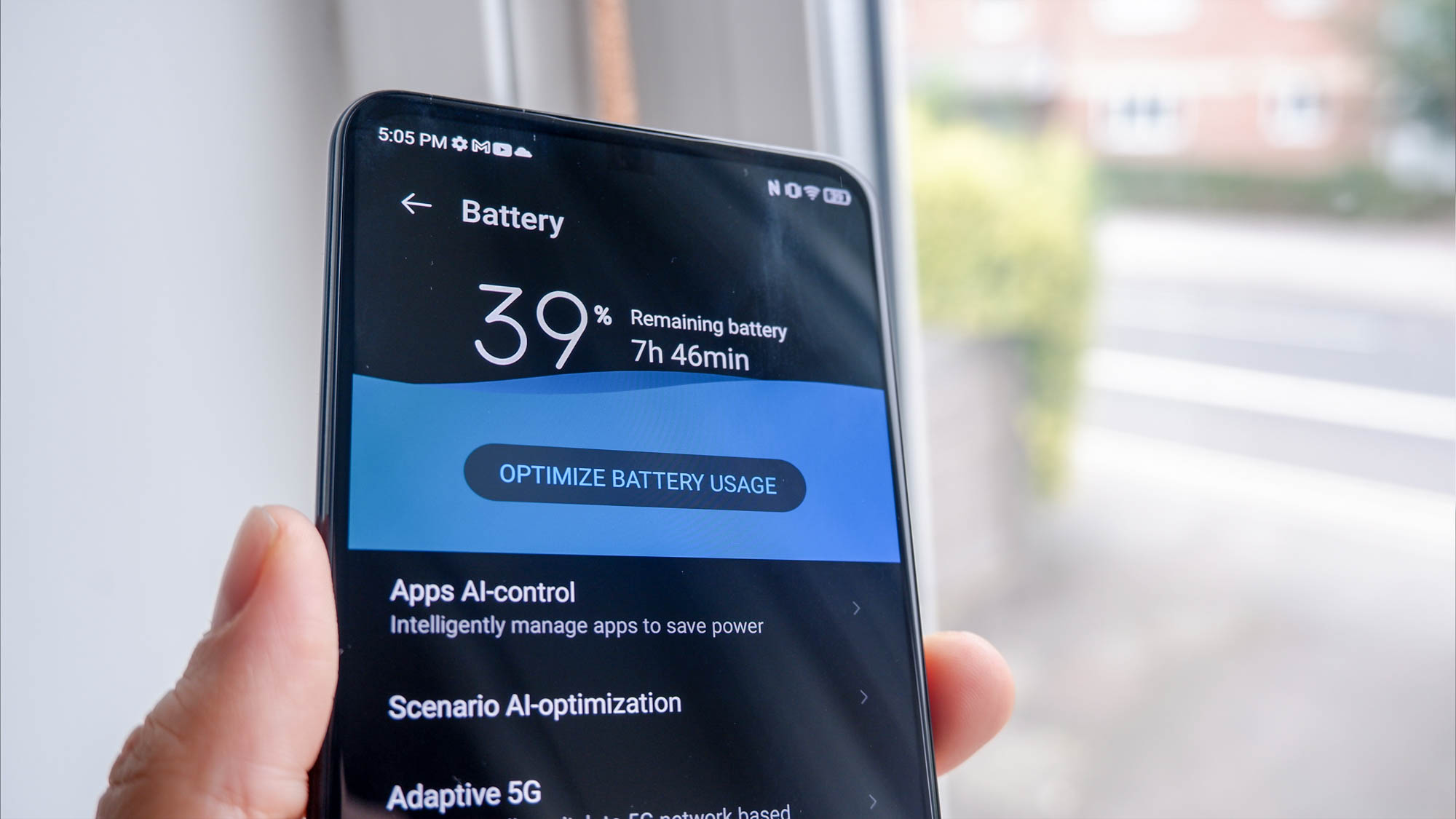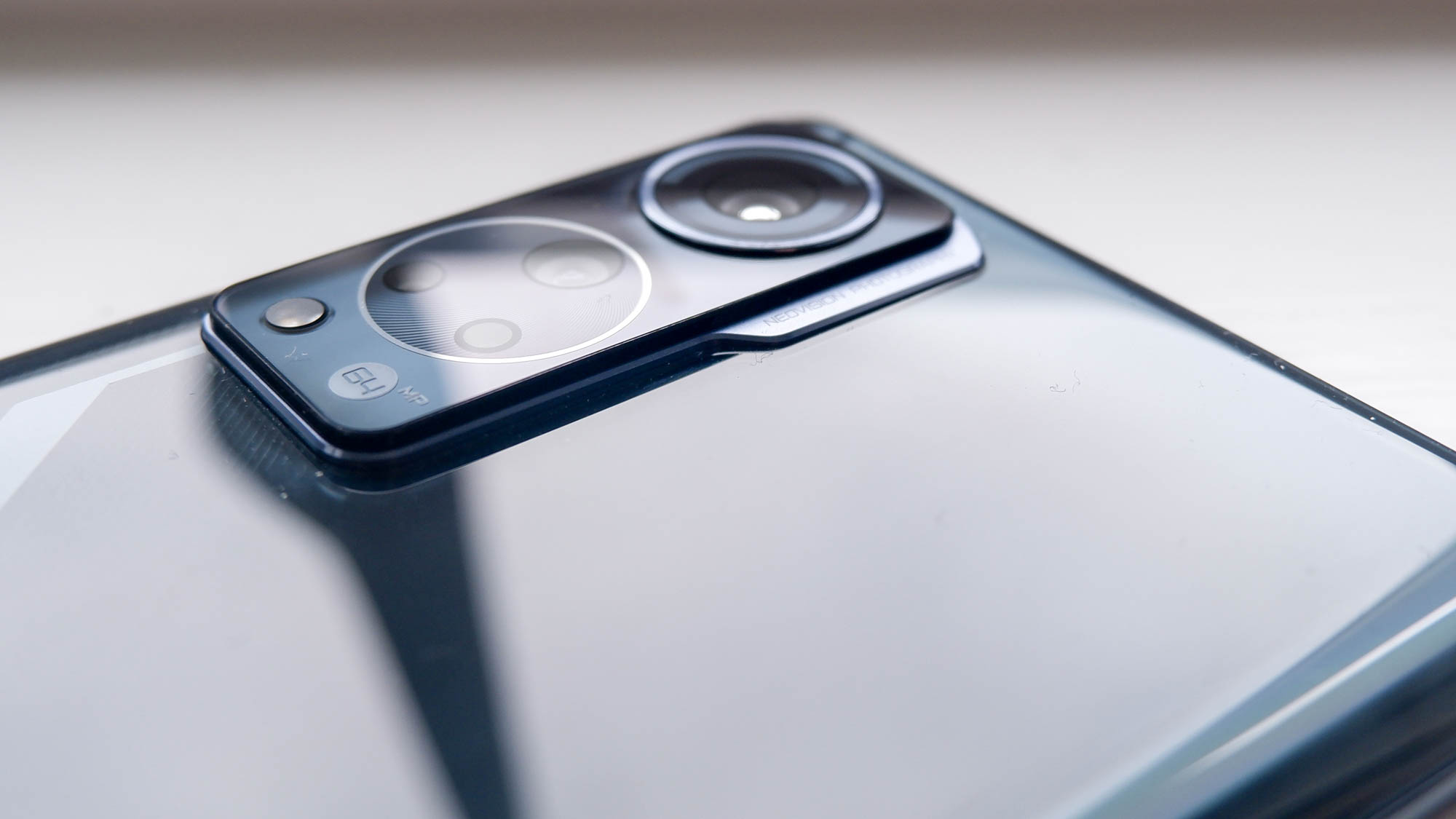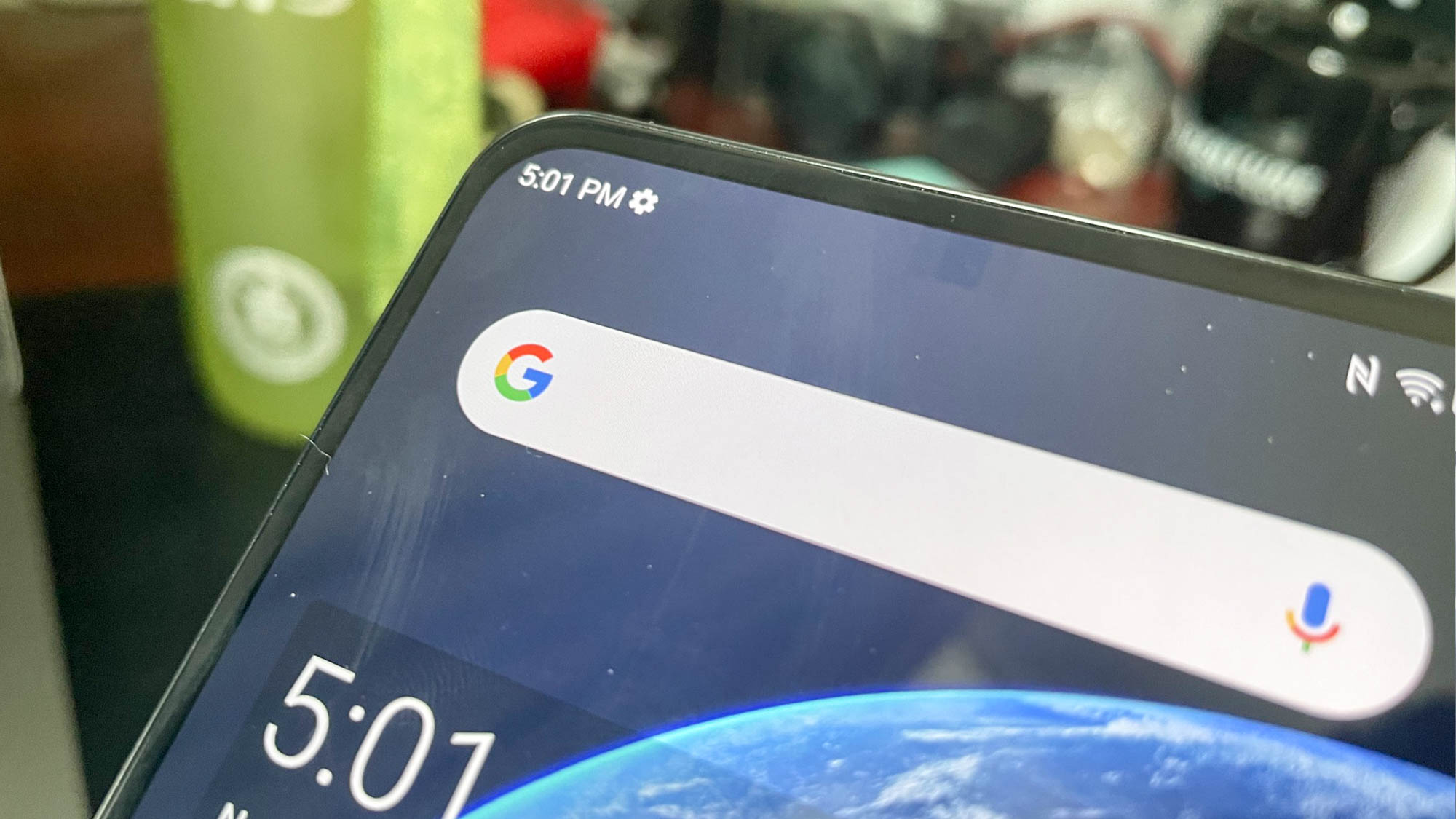Laptop Mag Verdict
The ZTE Axon 30 5G is a decent phablet, but the under-screen selfie camera is poor and you can get more powerful phones with longer battery life at the same price.
Pros
- +
Gorgeous 6.9-inch display
- +
Speedy performance from Snapdragon 870
- +
Strong speakers
- +
Decent battery life
- +
Under-display selfie cameras are the future, but...
Cons
- -
...selfies are bad
- -
Average cameras
- -
Below-average battery life
- -
Phablet size is not for everyone
Why you can trust Laptop Mag
Under-display selfie cameras are the hot trend in smartphones and ZTE came to the party early with its Axon 20 last year. The results were underwhelming, but the new Axon 30 5G is taking another swing at the formula.
Looking at the entire package, the Axon 30 5G has a massive 6.9-inch AMOLED screen, the latest Snapdragon chip, and a quad-camera setup — premium features sold at a surprisingly affordable price.
That is, after all, the company’s M.O. As you saw from the RedMagic 6R (created by ZTE subsidiary, Nubia), flagship killers are the name of the game and this is no different. But does the Axon 30 5G live up to the spec-based expectations? And more interestingly, is a camera concealed by a display worth using? Let’s find out.
ZTE Axon 30 5G: Price and configurations
The ZTE Axon 30 5G launches on September 9 in two configurations: with 8GB RAM and 128GB storage for $499 (£429), or 12GB RAM and 256GB storage for $599 (£519). You can choose from either a black or aqua finish.
If your heart is set on one, you can take advantage of an early bird offer that gives you a $30 coupon and a free pair of ZTE LiveBuds.
ZTE Axon 30 5G: Design
Housing a near 7-inch screen, this is one of the largest phones we’ve tested this year, and while its gargantuan size may not be for everyone (6.7 x 3.1 inches), it’s certainly thin and lightweight enough for use without making your hand fatigue (0.31 inches, 6.7 ounces).
Sign up to receive The Snapshot, a free special dispatch from Laptop Mag, in your inbox.
To compare, the ZTE Axon 30 5G is considerably taller and wider than the Realme GT (6.2 x 2.9 inches), while sharing virtually the same thickness (0.3 inches) and being a touch heavier (6.6 ounces). As for the other big boy this year, the Samsung Galaxy S21 Ultra (0.34 inches, 7 ounces), the ZTE is still taller and wider (6.4 x 2.9 inches), but comes in thinner and lighter.
On the face of it, the Axon 30 5G is a standard sandwich composed of glass on the front and back with a metallic-style rail linking the two. I received the black model, which has an eye-catching holographic effect across the back.
But there are a couple of issues — namely, the large logo emblazoned on the rear and the two-ring camera housing. Granted, the Axon branding here is not as garish as “dare to leap” on the Realme 8 Pro, but I prefer a cleaner finish.
Seemingly inspired by car headlights and Huawei’s P50 Pro, the rear bump on the Axon 30 5G will be divisive. The holistic result is not as testosterone-fuelled as the current crop of gaming phones, but still excessive. We recommend you get a case if you want to cover all this stuff up.
ZTE Axon 30 5G: Display
The display is a tale of ZTE doing all the right things, only to shoot themselves in the foot at the end. Going full phablet, the Axon 30 5G sports a massive 6.9-inch AMOLED panel with a 2460 x 1080-pixel resolution, 10-bit color and a 120Hz refresh rate.
ZTE also claims a 100% DCI-P3 color gamut, which results in colors popping off the screen, while the picture remains sharp and buttery smooth. The trailer for Spider-Man: No Way Home makes the most of OLED’s benefits with a depth in darker scenes making the brighter effects of Doctor Strange’s spells really glow.
Plus, with a 360Hz touch sampling rate, interactions are super snappy. The low blue light-certified software and hardware at play here help reduce visual fatigue, meaning I can play Call of Duty Mobile for longer than usual before feeling eye strain.
Overall, the display makes for a lovely viewing experience except for one thing. That front-facing camera door is a massive distraction. In fact, it’s a helluva lot more distracting than a hole punch or notch.
The team tried to make it less so with an upgraded pixel matrix over the Axon 20, but that weird square at the top is always there, drawing in your gaze. It becomes a considerable eyesore on what is an otherwise impressive screen, and while it’s a cool gimmick to show your friends once or twice, the weird phased pixels will annoy you in the long term.
ZTE Axon 30 5G: Audio
A big and bright display needs powerful speakers to complete the multimedia package, which the Axon 30 5G delivers handily with a powerful speaker using DTS: X Ultra audio.
It sucks having just mono audio and putting the Axon 30 5G’s speakers through their paces with The Beatles’ “A Day in the Life” (my go-to test track) exposed some issues with distortion when complex compositions were played at higher volumes, but simpler songs and videos sound great without crackles and pops.
The lack of a 3.5mm headphone jack is an ever-growing shame across smartphones, but much like the RedMagic 6R, ZTE makes up for this (and more) by including a pair of wired earbuds and a USB-C to headphone adapter in the box.
ZTE Axon 30 5G: Performance
The ZTE Axon 30 5G features a Qualcomm Snapdragon 870 processor with up to 12GB LPDDR5 RAM and 256GB of UFS 3.1 storage. This power is kept at optimal temperatures with a triple threat of cooling: a large vapor chamber, a graphene copper matrix composite material and a high-power heat-transmitting gel. Connectivity is handled by 5G and Wi-Fi 6 antennas on both sides of the phone, meaning data speeds are never hampered by your hands covering up the signal.
Putting the Axon 30 5G through its paces with some benchmarking turned out positive results. In Geekbench 5, the phone hit 866 single-core and 3,103 multi-core scores.
Numbers like that don’t match the likes of similarly-priced phones with Snapdragon 888 CPUs like the Redmagic 6R (1,123 single and 3,652 multi-core), but the power in the Axon comes impressively close to more expensive phones like the Samsung Galaxy S21 Ultra 5G (1,123 and multi-core of 3,440).
For graphics, the ZTE phone got a score of 4,169 in Wild Life and an average frame rate of 25 FPS. Again, that is a bit behind the competition (Redmagic 6R achieved a 5,886 and the Realme GT hit 5,836), but benchmarks aside, this translates into a zippy experience.
Apps open near-instantaneously, slow downs in multitasking are non-existent and data loading speeds are great. You won’t be disappointed with the performance of this phone.
ZTE Axon 30 5G: Battery life & charging
The 4,200 mAh battery in the ZTE Axon 30 5G is slightly smaller than the one in the Axon 20 (4,220 mAh) and dwarfed by its competitors, such as the Realme GT’s 4,500 mAh capacity.
I barely scraped through a day of average usage (emails, calls, social media, taking some quick pictures, Spotify by day, gaming and YouTube by night) with just a couple of percent left when I turned in for the night.
Sure, the 65W fast charging is nice to have for quick top-ups (reaching 80% in around 40 minutes in my testing), but a bigger battery is needed for a massive screen, 5G and these internals.
ZTE Axon 30 5G: Cameras
This is where things get interesting, but not for the right reasons.
Starting round the back, you’ve got a quad-camera setup featuring a 64MP Sony IMX682 main snapper with an f/1.8 aperture, an 8MP ultra-wide with a 120-degree field of view, a 5MP macro and a 2MP depth lens.
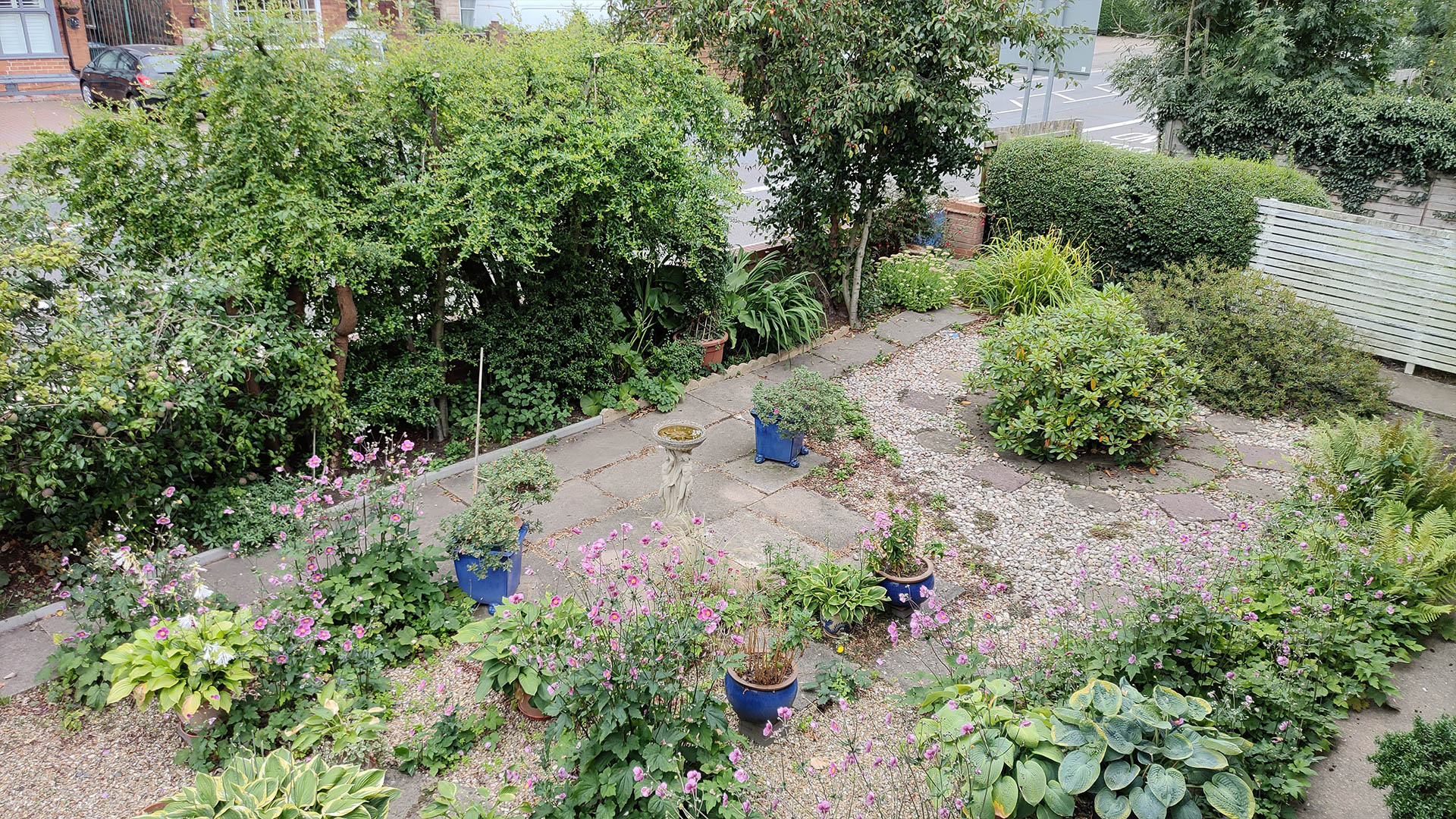

The picture quality is as you’d expect from this standard array for phones in this price range. Details are crisp and colors are vibrant during the day. The camera’s AI mode makes pictures a bit too saturated for my tastes so for more realistic results, you should turn the feature off.
When the sun goes down, night mode does a decent job of illuminating scenes, but photos are still noisy, as the ISO struggles to contend with the aperture. Also, the AI smoothing that battles your hand shakes makes objects look artificial.
You can shoot 4K video at up to 60 FPS, but the quality comes down to hardware and software working together. Image stabilization keeps things smooth, but the quality on the whole is average. The auto-focus is very slow too, but ZTE added some other interesting video options, such as vlog templates and the option to shoot from multiple cameras at the same time. The phone is good enough for recording moments with your friends but that’s about it.
Flip the phone over and there is a 16MP front-facing camera hiding under the display. I’ve already talked about what it looks like, so let’s go in some more depth on the lens itself. ZTE has already taken a swing at this approach in the Axon 20 by using a 32MP sensor. This year, the team opted for fewer but bigger megapixels to allow more light in, alongside a special OLED and more transparent cathode to (ideally) create better conditions for selfies.
Can this under-screen selfie camera produce good photos? In one word: no.
Photos are super spongy and over-processed, almost as if someone had smeared a bit of vaseline on the lens. I won’t go so far as to say it’s a potato, but the picture quality is pretty damn close to that level. The Axon 30 5G is certainly not for those who take many front-facing pictures.
The problem isn’t the hardware. On any other hole-punch display, this camera would be perfectly fine, but ZTE stacked the deck against itself by trying to make it work under a bunch of pixels. One thing is clear: the technology is still very much in its infancy and OEMs need to figure out how to make it work.
On the Axon, if you quickly head over to view the photo in your camera roll, you can see the software tweaking the image for a few seconds to improve brightness and sharpness. None of it helps, but it shows just how much is needed to overcome the new camera design.
At least with something like the Samsung Galaxy Z Fold 3, the under-screen camera is not the only way to take a selfie. On a more typical slab phone like the ZTE Axon 3, this is your only front-facing shooter and it’s the weakest part of the formula.
ZTE Axon 30 5G: myOS 11
Of course, a smartphone is only as good as its software. The myOS 11 UI skin over Android 11 offers a clean combination of tiles and widgets that you can tweak to your liking, along with a friendlier, rounded set of system icons and fonts.
All your most-needed system settings are easily accessible on the drag-down tray and I’ve got to give a particular shoutout to Z-Pop — a customizable equivalent to Apple’s AssistiveTouch that made one-handed navigation of this beast a cinch.
Bottom line
ZTE hedged all its bets on a gorgeous screen, decent performance and the innovation of an under-display camera, with the trade-offs being less-than-flagship internals, subpar camera quality and the lack of a water/dust resistance rating.
The naff camera is a head scratcher, given the importance of having a good front-facing snapper. The picture quality, along with the distracting camera door, proves this technology is not ready for primetime.
But all-in-all, the Axon 30 5G is a decent flagship-killing package for the price. If you can workaround its pitfalls, this is a glimpse at one of the next big steps forward in smartphone design.

Jason brought a decade of tech and gaming journalism experience to his role as a writer at Laptop Mag, and he is now the Managing Editor of Computing at Tom's Guide. He takes a particular interest in writing articles and creating videos about laptops, headphones and games. He has previously written for Kotaku, Stuff and BBC Science Focus. In his spare time, you'll find Jason looking for good dogs to pet or thinking about eating pizza if he isn't already.
